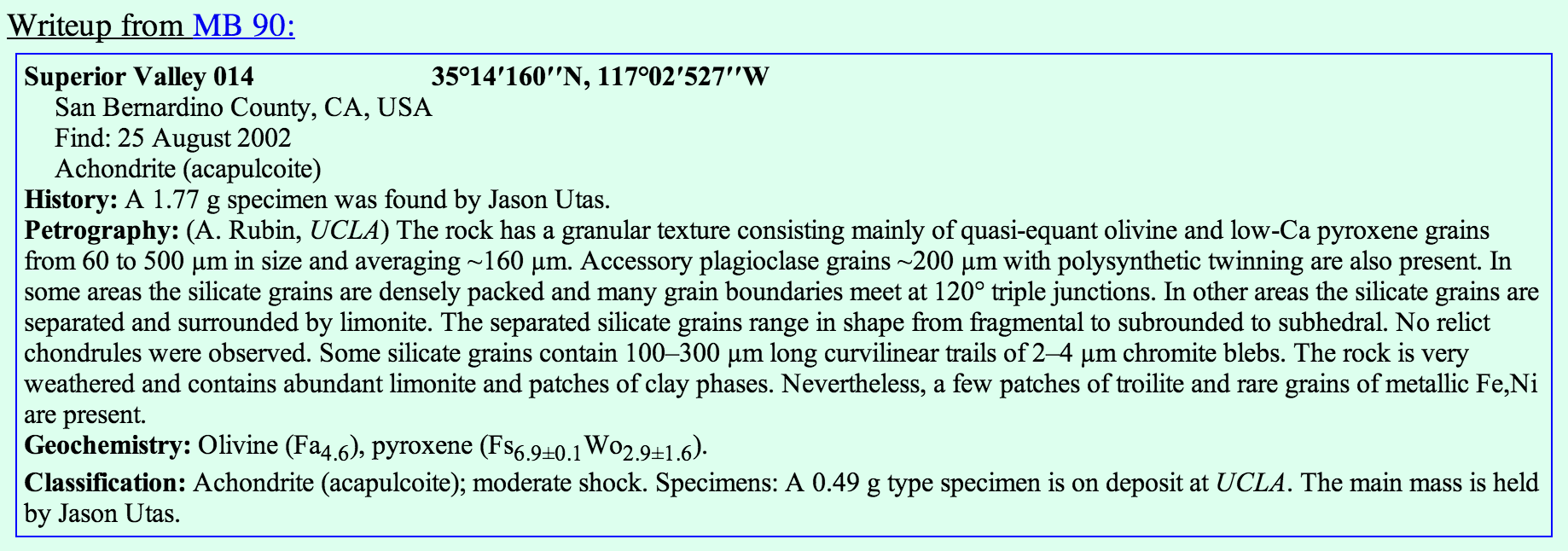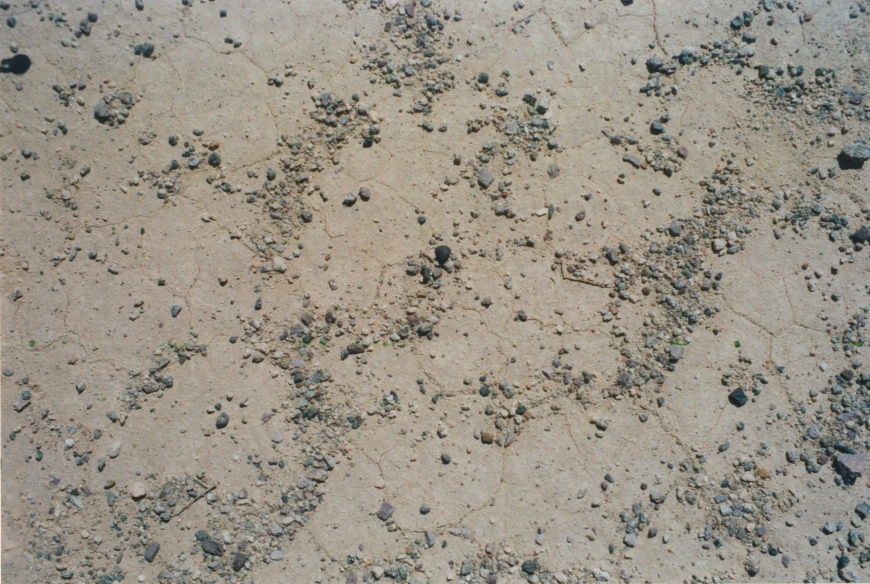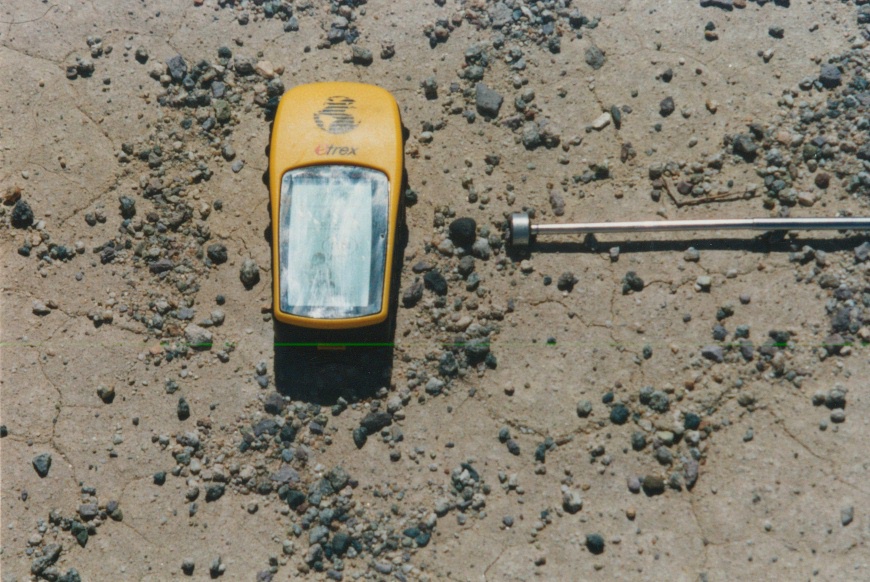Superior Valley 014, acapulcoite
Our first “meteorite hunt” was in Gold Basin in 1999, but we went on our first cold hunts a year or so later.
I was 12 years old. Peter and I had been interested in meteorites for a few years. We had no idea what we were doing or what to really look for. Melted black things with thumb-prints and flow lines? I distinctly remember looking for something like Millbillillie, or the howardite Great Sand Sea 010. Grey interior, shiny black crust. That’s what meteorites look like, right?
After a few fruitless trips to dry lakes, we decided to focus on Superior Valley. Robert Matson offered some guidance at the time: we talked about a few different lakebeds. Cuddeback, Lucerne, Harper, Superior Valley. Superior was pretty close. It was probably hunted out, but there might be a few stones left?
We drove to the Westernmost lakebed in the valley, where only a few meteorites had been found. The shorelines of the lake were wall-to-wall dark stones, for hundreds of yards. It was hopeless.
So, we wandered into the middle of the lake; there weren’t too many stones, but there were .50 caliber bullets and pieces of bomb shrapnel all around us as we walked. We picked up any stone that was magnetic.
A few days later, we found ourselves on the 4th floor at UCLA’s geology building, at Dr. Alan Rubin’s door, with a handful of magnetic stones. He thought one of them looked more promising than the others. It stuck strongly to a magnet. It was promptly cut — and showed visible metal flakes and chondrules! Superior Valley 012, H4, S1, W3.
It was a small, rusty-brown rock — a little shiny, polished by the wind. It showed us what to look for.
We returned to the Easternmost lakebed a few weeks later, and found a few stones over a three day weekend. The first stone was a freshly fusion-crusted pea, Superior Valley 013. This was the second find from the trip. Here’s the Meteoritical Bulletin write-up:
This stone was described in detail in Alan Rubin’s 2007 paper on the petrogenesis of the acapulcoite-lodranite group.
This meteorite is a great example for kids interested in the sciences; as a 12-year-old who knew a little about rocks and even less about meteorites, I got lucky and stumbled across a meteorite that was a) really rare, and b) actually useful for research! That’s pretty cool. And I think it really shows that anyone can do it.
1.05 gram main mass



